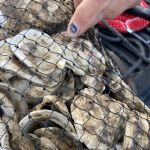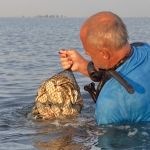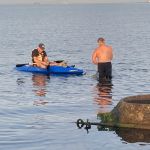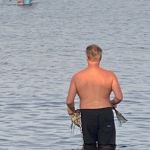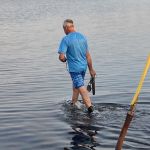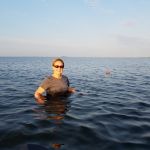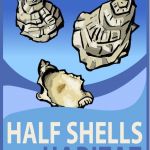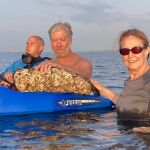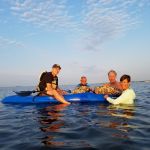Great South Bay Oyster Project
Photo Gallery
Recent Progress
Volunteer
Habitat Restoration

Habitat Restoration
We advocate for healing the creeks that feed our bay, for bay-friendly yards, for helping to return a shellfishing industry to the Great South Bay, and for the deployment of modern wastewater treatment technologies to address the problems caused by 500,000 cesspools and septic tanks, as well as the 197 large scale septic systems in malls, apartment complexes and locally.
Volunteer
Lend a hand! Join our Oyster Project Team and help revive The Great South Bay.
Partnering With Oyster Growers
Of course, nothing happens without cleaner water. That is why getting rid of our cesspools and septic tanks, healing our creeks, tackling runoff, and practicing natural lawn care is so important.
Please contact us with any suggestions you may have. You can also donate our efforts. We want to apply the latest techniques in aquaculture to revitalize our bay, our economy and our local culture.
We advocate for healing the creeks that feed our bay, for bay-friendly yards, for helping to return a shell fishing industry to the Great South Bay, and for the deployment of modern wastewater treatment technologies to address the problems caused by 500,000 cesspools and septic tanks, as well as the 197 large scale septic systems in malls, apartment complexes and locally.
Where You Can Get Fresh, Long Island Blue Point Oysters
- Neguntatogue Oysters (Lindenhurst) – call or text Keith & Nicole at 631-275-8046
- Blue Island Oysters (Sayville)- Call Chris at (631) 563-1330 for availability
- Maris Stella Oysters (Captree) – call or text Sixto at 516-939-5545
- Little A’s (Bay Shore) – call or text Michael at 917-526-1900
- Red Tiger (West Islip) – call or text Lou at 646-228-6273
The Making Of An Oyster Sanctuary
Site Evaluation
Establishing the Sanctuary
Enhancing and Measuring for Success
Recent Progress On Habitat Restoration
Pouring Rain Again — Many Long Island Beaches Will Remain Closed Because of Polluted Ground Water
The ecological condition of Long Island’s ground water has reached a crisis point. Year by year the algal blooms grow more intense and pervasive, with brown tides erasing more habitats, with contaminated waters closing more and more acres to shellfishing, and with more and more beaches closed to swimming for longer and longer periods.
The Breach Report 6-13-13
Michael Busch has some great pics of The Breach / New Inlet. From June 13th. Weakfish and bluefish are in abundance in Bellport Bay.
Breach Report 6-12-13
Michael Busch of Great South Bay Images took this shot of The Pattersquash Gunner’s Association clubhouse, which sits right now in the middle of a system of shoals, sandbars, and channels that is the New Inlet. As you can see, much of the water is quite shallow. Sandbar islands have emerged, and shift now as The New Inlet shoals up and drifts slowly westward. Some intrepid soul came to the clubhouse, probably by kayak, and planted this flag.
This is NOT something Save The Great South Bay would ever endorse — trying to navigate in these shifting shallows and strong currents — but we have to admit it made for a great picture.
19 Nassau Beaches Closed Including Island Park, But the Charter Fishing Continues
A charter fishing boat out by the OUTFALL pipe of The Bay Park Sewage Treatment Plant, and during a week when the surrounding beaches are closed because of contaminated runoff.
From Newsday 6-08-13 — Carl LoBue and Christopher Gobler Weigh in On Algal Blooms This Spring and How the Breach Is (Thus Far) Sparing The Great South Bay From Brown Tide
The dreaded brown tide is back in some South Shore bays, threatening everything from eelgrass to scallops, but Great South Bay has been spared so far thanks to superstorm Sandy, a marine scientist said Friday.
WYNC Interviews Carl LoBue and Nancy Kelley of The Nature Conservancy on Water Quality and Importance of Restoring Clamming In The Great South Bay
Summer is right around the corner, which means many of us will head out to Long Island for clams bakes and time on the beach. But there’s a problem lurking in the waters around the Great South Bay. According to studies from The Nature Conservancy, excessive nitrogen is polluting the waterways.
“We have these symptoms in many places, either harmful algal blooms, some of which are actually toxic to fish and wildlife, some of which are toxic to people,” said Carl LoBue, The Nature Conservancy’s senior marine scientist on Long Island. “So that actually has a big impact on which fish enter our bays, which fish are healthy to eat. And then in some places, like Western Long Island Sound where the water is deep, we get hypoxic dead zones, like you might hear about in the Gulf of Mexico.”

